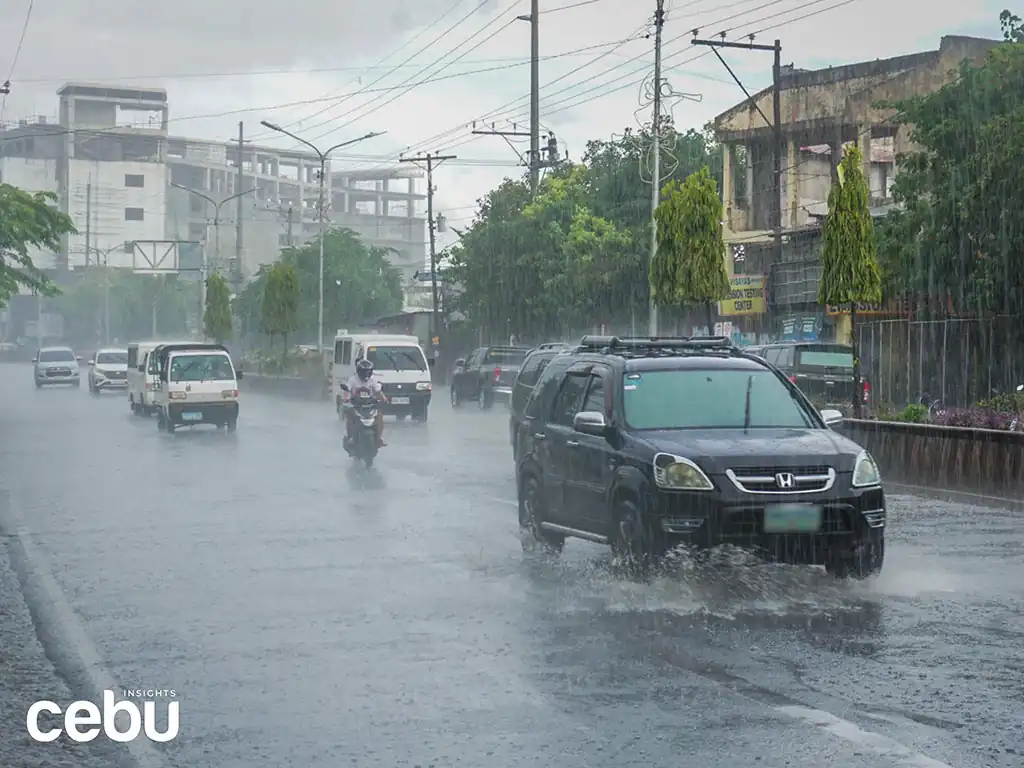The rainy season can be difficult for Cebuanos who commute daily.
If you plan on traveling to the Philippines after summertime, make sure to bring an umbrella along with some comfortable jackets.
The Philippines’ rainy season officially starts in June, as the Southwest Monsoon called the Habagat approaches the country.
During this time, you can expect much cooler weather in the Philippines.
As the monsoon interacts with the Philippines’ tropical climate, rainfall and thunderstorms become more prevalent in the country. While it’s nice to be free from the unbearable heat, you may have to go through a few inconveniences.
This is also considered typhoon season since tropical cyclones enter the Philippine area of responsibility. Many of these weather disasters have destroyed millions of pesos worth of property and livelihood.
As the storms subside, you may also witness significant flooding in many areas of the country. This makes traveling difficult, while also bringing some serious health hazards.
Both the wet season and dry season in the Philippines require you to make a few preparations to ensure that your visit goes smoothly and that you remain safe.
SAFETY TIPS FOR THE RAINY SEASON

An umbrella is one of the most important travel essentials during the wet season and dry season in Cebu.
- Bring the essentials.
Nobody wants to be drenched in the rain, so an umbrella always comes in handy. This should definitely be part of your travel essentials since it can be quite hard to predict if it’s going to rain.
When buying an umbrella, take note of how heavy it is and if it’s easy to carry around. Try looking for a portable one that can fit your bag but is also easy enough to take out and open with a click of a button.
You can also buy one at convenience stores, but it may not be of the best quality. Shopping malls have branded umbrellas that are durable enough to last a long time.
If you travel on a motorcycle often, definitely invest in a raincoat. This will help keep you dry from the rain without having to pull an umbrella out.
- Check the weather forecast.
Take a look at the weather report first thing in the morning. This will help you decide what to wear and what to bring when you go out.
The weather forecast can also inform you about incoming typhoons so that you can plan your trips or prepare the essentials at home ahead of time.
Applications like AccuWeather are extremely important to stay informed about the weather on the go. You’ll be able to know the weather conditions throughout the week and plan your itinerary wisely.
You should also follow what is advised by your local government unit or watch for real-time updates from PAG-ASA (Philippines Atmospheric, Geophysical, and Astronomical Services Administration) on their social media accounts.
- Be cautious of risky areas.
Manipis Road can be quite dangerous to drive in during the rainy season.
The Philippines is also home to mountain ranges with dozens of mesmerizing tourist spots. Cebu Transcentral Highway and Manipis Road, for example, are frequented by locals and tourists who are looking to explore the many attractions in the mountains and other far-flung areas on the island.
The downside to areas like these is that they are prone to landslides, making it risky to pass through during heavy rainfall.
Make sure to check the weather before passing by these areas. You might also prefer to hire someone more experienced in traversing these roads to ensure a safer trip.
Subsequently, you should probably avoid remote islands when it’s days before a typhoon because of possible strong winds. Boat trips may be canceled and you might end up getting stranded.
- Avoid areas that are prone to flooding.
Beware of floods during the rainy season.
Floods are unfortunately pretty common in Cebu, and they can cause extreme traffic jams. The water can sometimes reach the sidewalks, making traveling on foot difficult too.
It’s best to stay home after a strong thunderstorm that may cause flash floods, especially if you aren’t familiar with the shortcuts and alternative routes in a particular neighborhood. Commuting won’t be much easier either since some drivers are less likely to drive around flooded areas.
Walking on floodwater is also dangerous since the water can carry dangerous diseases like leptospirosis. Improperly disposed garbage can clog drains and canals, adding another health risk.
As the rain subsides, stay away from stagnant water since this can be a nest for mosquitoes carrying the dengue virus. If you do plan on going out, make sure to apply insect repellant to exposed parts of your body.
- Prepare the essentials at home as well.
With typhoons being an unfortunate reality in the Philippines, packing and storing essentials is crucial. Depending on how intense the storm may be, you could lose some valuable items at home.
Strong winds can destroy electrical posts, taking away power in busy areas. Blackouts can be prevalent as well, so make sure you have a portable light source that doesn’t run on electricity.
You should also keep food that lasts long without being stored in a refrigerator. Canned goods like tuna, corned beef, and meat, as well as processed food like instant noodles, should be stored in your cupboards.
If you don’t have one already, consider purchasing a power bank or portable charger. Make sure to charge it days before the typhoon makes its landfall to use it during a blackout.
Both the wet and dry seasons in the Philippines have their fair share of risks and benefits. If you want to make sure your stay in the country goes smoothly, it’s best to be prepared for whatever outcome.
The rainy season is known for its cool weather, but also its annoying rain showers and sometimes destructive weather disasters.
These tips will make traveling around easier to manage, and more importantly, keep you safe.
The Philippines is a great place to visit no matter what day of the year, so make sure you are equipped to weather any storm.









